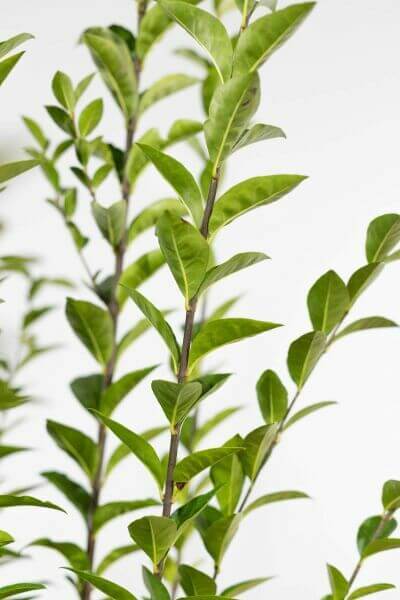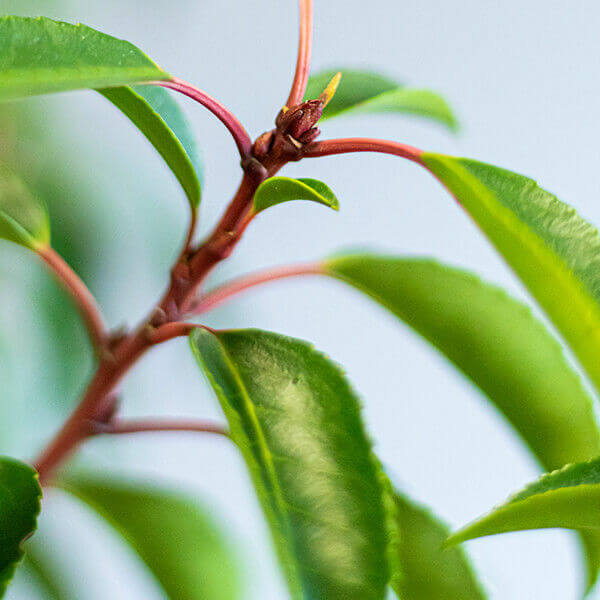Hedge Plants For Texture
Hedge Plants For Texture
Blog Article
Best Hedging Plants For Flowering Borders
Improve your garden's attraction with rich hedge ranges such as Yew (Taxus), Thuja, Laurel, Photinia, and Bamboo, celebrated for their structural integrity and environmental benefits.
Yew and Thuja provide evergreen coverage and winter resilience, while Laurel uses rapid development and broad, fragrant leaves.
Photinia adds seasonal appeal with its dynamic red foliage, and Bamboo lends a low-maintenance, serene atmosphere.
These hedges enhance air quality, decrease sound, and develop tranquil, personal areas.
Proper planting, spacing, and maintenance ensure energetic development and environmental harmony.
Explore how these lush ranges can elevate your garden's beauty and well-being.
Key Takeaways
Transform Your Garden With Lush Hedge Ranges
- Select Yew for its thick, evergreen growth and unparalleled durability.
- Select Laurel for its fast growth and broad leaves, making sure quick privacy.
- Pick Photinia for its dynamic seasonal foliage, which turns a striking dark red.
- Utilize Bamboo for a low-maintenance, winter-hardy hedge with visual appeal.
- Area plants 2-3 per meter and prune routinely for optimal development and health.
Popular Hedge Plants
When changing a garden with rich hedge varieties, it's necessary to think about popular hedge plants such as Yew, Thuja, Laurel, and Photinia due to their unique attributes and benefits.
Yew (Taxus) is extremely esteemed for its durability and dense, green development, making it a prime choice for sustaining landscapes.
Thuja is kept in mind for its evergreen foliage and robust winter resilience.
Photinia adds seasonal vibrancy with red leaves that darken over time, developing dynamic visual appeal.
Laurel provides rapid growth and aromatic, broad leaves, ideal for quick personal privacy.
Additionally, Bamboo is an exceptional choice for ambiance, using a low-maintenance, winter-hardy option that improves the garden's visual with its elegant, swaying canes.
These choices cater to a variety of horticultural needs and choices.
Benefits of Garden Hedges
Garden hedges use a wide variety of benefits, making them a valuable addition to any landscape. These natural barriers are economical to implement and supply considerable wind protection, boosting air blood circulation and contributing to noise decrease. The dense foliage of hedges like Thuja and Beech ensures personal privacy by obstructing visibility, producing a secluded and peaceful environment.
Hedges likewise play a vital function in microclimate guideline, supplying a steady environment that promotes plant development and lessens temperature changes. Their elaborate leaf structures filter contaminants, improving air quality and contributing to a much healthier garden ecosystem.
Moreover, hedges excel in sound reduction, taking in and deflecting sound waves to lower ambient noise levels. This dual functionality of supplying both acoustic and visual privacy improves the overall serenity and visual appeal of any garden.
Planting and Maintenance Tips
For a successful hedge, careful preparation of the planting area is essential. Make sure the soil has proper pH and drainage to support strong root advancement.
Area the plants appropriately for the selected species. Water the hedge regularly during its initial development stage, changing as needed with seasonal changes.
Execute a organized insect control and illness avoidance strategy, using chemical or natural treatments when essential. Regularly inspect for aphids, mites, and fungal infections.
Apply mulch to keep wetness and reduce weeds. Seasonal pruning promotes thick growth and air flow, vital for plant health.
Following these guidelines will help you cultivate a dynamic, well-maintained hedge that boosts the beauty of your garden.
Spacing and Cutting Guidelines
Spacing and Trimming Standards
Proper spacing and trimming are crucial for cultivating healthy, visually appealing hedges. Appropriate spacing ensures each plant receives adequate nutrients, light, and air flow.
Follow these standards for ideal hedge upkeep:
- Spacing: Position hedge plants 2-3 plants per meter to encourage robust growth.
- Pruning Techniques: Regular pruning is important for maintaining desired hedge height and shape. Trim brand-new development in summer season and cut back older wood during winter.
- Seasonal Care: Adjust cutting schedules and approaches according to seasonal requirements to guarantee plant health.
- Hedge Height: Routinely monitor and trim to keep the preferred hedge height and accomplish uniform visual appeals.
Abiding by these actions will ensure your hedge thrives, boosting both the appeal and performance of your garden.
Choosing the Right Hedge
Selecting the Right Hedge
Choosing the proper hedge involves evaluating aspects such as fully grown height, foliage density, and environmental strength. Effective hedge plant selection needs understanding each species' development characteristics and site-specific flexibility.
For instance, Yew (Taxus) offers exceptional longevity and thick growth, while Thuja is significant for its winter strength. Furthermore, thinking about maintenance requirements is vital; fast-growing species like Laurel or Privet need regular cutting, whereas low-maintenance options like Bamboo or Ivy may be more suitable for those looking for minimal maintenance.
Environmental aspects such as soil type, light accessibility, and moisture conditions need to likewise direct the selection procedure. This careful approach guarantees the chosen hedges will flourish, providing both functional and visual benefits to the garden landscape.
Shipment and Planting Guidance
To guarantee your hedge plants thrive, they must be provided by specialized couriers and planted promptly upon arrival.
Follow these vital actions for successful planting:
- Soil Preparation: Enrich the soil with natural matter to enhance drainage and nutrient content.
- Planting Depth: Produce a trench two times the width and equivalent to the depth of the root ball.
- Watering Strategies: Water thoroughly after planting, keeping the soil consistently damp however not filled.
- Mulching: Apply a layer of mulch to retain moisture and reduce weeds.
Client Assistance and Service
Offered the crucial role of timely support in horticultural pursuits, our client support team is offered 6 days a week through telephone, e-mail, and social networks to use expert advice and swiftly deal with any concerns. Their commitment to quick response times ensures customer complete satisfaction by fixing inquiries associated with plant health, ideal planting techniques, and maintenance schedules.

-------------------
Within 24 hours
This extensive support group, enhanced by an excellent 9.3/ 10 consumer rating, highlights our commitment to enhancing the gardening experience for each client.
Often Asked Concerns
For How Long Does It Consider Hedge Plants to Develop?
Hedge plants normally need one to 3 years to end up being completely developed, with the precise duration varying by species and growing conditions.
Effective care during this critical period is necessary for robust development. Constant watering, alert weed control, and suitable fertilizer application are critical in promoting strong root development.
For example, fast-growing species like Laurel might develop quicker, while slower-growing varieties such as Yew might take longer. Diligent maintenance speeds up the facility process, resulting in thick and healthy hedges.
What Are the Finest Hedge Plants for Privacy?
The question of the very best hedge plants for personal privacy involves evaluating evergreen and deciduous alternatives.
Evergreen hedges like Thuja, Laurel, and Cypress supply year-round coverage, ensuring constant personal privacy.
In contrast, deciduous hedges such as Beech use seasonal personal privacy, shedding leaves in colder months.
Secret upkeep suggestions hedging plants for privacy hedges consist of regular trimming, fertilizing in spring, and correct spacing-- generally 2 to 3 plants per meter.
Additionally, constant watering and persistent weed elimination are important for promoting healthy, dense development.
Can Hedge Plants Attract Wildlife to My Garden?
Yes, hedge plants can bring in wildlife to your garden by offering necessary benefits like shelter, food, and nesting websites, consequently enhancing regional biodiversity. For example, yew, holly, and laurel are exceptional for drawing in birds, while ivy supports a range of insects.
Nevertheless, it is very important to note that there are some downsides, such as increased maintenance to handle pests and routine maintenance. Carefully choosing and maintaining hedge varieties can assist balance these benefits and downsides, eventually fostering a dynamic and sustainable ecosystem in your garden.
Are There Any Blooming Hedge Plants Available?
Yes, there are flowering hedge plants readily available that can enhance the charm of your garden.
For instance, Elaeagnus, likewise called Olive Willow, produces aromatic white flowers in the fall, including a touch of sophistication.
Photinia, another popular choice, showcases dynamic red leaves that grow into a rich green, producing a vibrant visual result throughout the seasons.
To ensure these plants flourish, it's important to practice correct pruning strategies and seasonal maintenance, such as trimming new growth in the summertime and cutting down in the winter season.
These procedures will assist keep the health and aesthetic appeal of your flowering hedges.
How Do I Prevent Pests in My Hedge Plants?
To prevent pests in hedge plants, employ natural pest control methods and preserve appropriate hedge care. Introduce advantageous bugs like ladybugs, which take advantage of hazardous insects, to produce a balanced ecosystem.
Regularly inspect your hedges for signs of infestation and promptly eliminate any affected parts to prevent the spread. Ensure the health of your hedges by using well balanced fertilizers and supplying sufficient water.
Use mulching to keep soil moisture and proper spacing to lower plant tension and promote robust development. These practices collectively help in minimizing bug problems and preserving a healthy hedge.
Conclusion
In essence, choosing the ideal hedge ranges such as Yew, Thuja, and Laurel can change any garden into a peaceful haven. These plants supply year-round plant, enhance visual appeal, and deal practical advantages like sound reduction and wind defense.
Appropriate planting techniques, precise spacing, constant watering, and seasonal trimming are essential for ideal growth.
Trusted shipment services and expert consumer support make sure a smooth experience from purchase to planting, making it simpler than ever to raise your outdoor area.
Garden hedges offer a plethora of benefits, making them an important addition to any landscape. These natural barriers are affordable to implement and offer significant wind security, enhancing air flow and contributing to noise reduction. The thick foliage of hedges like Thuja and Beech ensures personal privacy by obstructing exposure, developing a secluded and peaceful environment.

Pruning Strategies: Routine pruning is important for maintaining wanted hedge height and shape. Cut new growth in summer and cut back older wood throughout winter.
Report this page